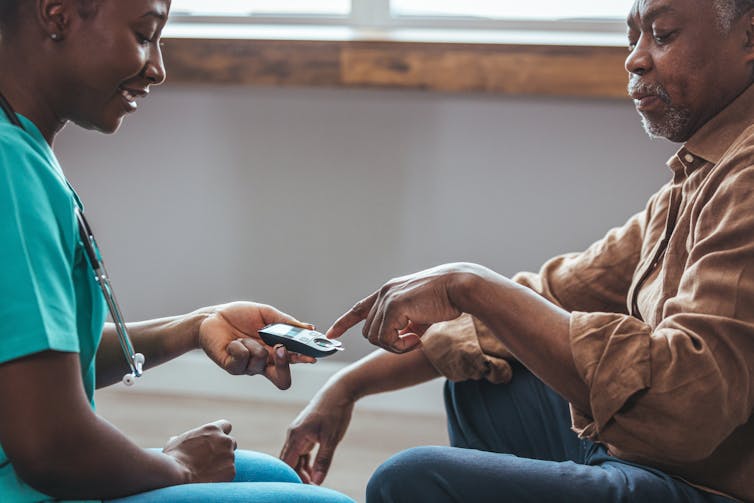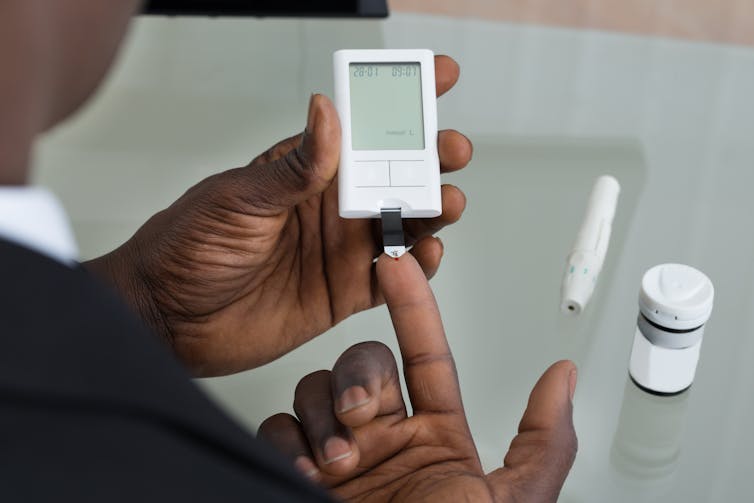Most people are aware that the process of bringing new medical products to market is rigorous, complex and tightly regulated. Diagnostic tests, therapies and treatments all go through lengthy, expensive trials to make sure they’re safe and effective before being approved for public use. The gold standard for clinical trials — randomized controlled studies — often require thousands of research subjects.
Society generally agrees such effort is necessary. Our medical system is built on evidence and trust, and reliable research is essential to both.
As a professor of medicine and a researcher with an interest in ethnic variation and health, I have reflected on who is included and who is left out of clinical trials. Unfortunately, clinical trials all too often fail to reflect the communities that stand to be most affected by the outcomes of that research.
Under-representation in clinical trials
The underrepresented of racialized, or non-white, people in clinical trials is a serious and largely unrecognized problem that needs more scrutiny as part of the growing movement to foster health equity.
Like other broad efforts to build a fairer, more inclusive society, there is an ongoing movement toward health equity — the effort to assure every person in society has equal access to health care.
There are multiple reports that show the majority of studies of genetic variants linked to Type 2 diabetes focused on higher-income white people of European background, whereas diabetes is more frequent in non-white ethnic groups. That led my colleagues and me to wonder if the same might be true of clinical trials for Type 2 diabetes treatments.

It turns out it was. That’s a significant concern, given that about 422 million people worldwide — roughly one in 20 — have diabetes, which disproportionately affects non-white ethnic populations such as South Asian, East Asian, Indigenous and Black people. The number of cases and the prevalence of diabetes have been steadily increasing for decades.
My research colleagues and I looked at 20 years’ worth of data for our January paper in the journal Diabetologia, and found that in diabetes-related clinical trials, there is a clear difference between the pool of research subjects and the populations statistically more likely to develop Type 2 diabetes.
While racialized, or non-white, populations carry a heavier burden of diabetes, the body of research subjects enrolled in Type 2 diabetes trials is disproportionately white.
We analyzed 83 studies that took place between 2000 and 2020, involving 283,000 research subjects. We found racialized people were somewhat under-represented in government-funded research and significantly under-represented in industry-funded research relative to the distribution of diabetes by ethnicity or race in the regions being studied.
The differences between government- and industry-funded study subjects may be attributable to government guidelines that call for proportional representation by gender, ethnicity and racial groups. In industry-funded research, there’s not much regulation at all in terms of ethnic diversity.
It isn’t necessarily racism — at least not direct, overt racism — that drives this dynamic. The answer is likely more banal: habit and convenience. Physicians who recruit research subjects for studies, as they often do, are likely to lean on the same patients they’ve recruited before, and their research co-ordinators are more likely to seek patients in local hospitals and clinics.
My study discusses how this reliance on traditional recruitment tools, such as posters in English in hospitals and clinics inviting people to volunteer, without considering the distribution of the disease of interest by ethnicity, leads to over-represention of white European participants, as there is no specific plan to engage high-risk communities.
Being motivated to collect data as quickly and efficiently as possible, pharmaceutical companies also usually go to clinical or academic research organizations they’ve worked with before. They generally recruit in ways they’ve used previously, which typically nets them higher-income, white European subjects.
Researchers may also avoid traditionally underrepresented groups, believing they don’t want to participate in research, when research in North America and England shows people from such groups would like to participate in research but are rarely asked.
Does underrepresentation affect results?

One may wonder whether the failure to balance the pool of diabetes research participants twists the results. The short answer is that in general, it likely does not.
While there is a genetic component to diabetes, we know from other research that physiologically speaking, people are more often similar in terms of responding to disease and to treatments, so the drugs we prescribe are legitimately effective.
However, detecting ethnic differences in serious adverse reactions to experimental drugs is more difficult because they are less frequent. Some may occur more frequently in ethnically diverse groups due to differences in the frequency of genetic variants or physiologic responses, leaving some vulnerable to hidden problems that a more diversified clinical trial participant pool could have exposed.
A broader problem is trust. We know racialized people are less likely to trust the medical system, all too often with good reason. Participating in trials would allow racialized people to develop a greater sense of inclusion and control — and feel they are players in the medical system, not outsiders to structures that have historically excluded or even abused them. Improving trust encourages more people to seek medical help when they need it.
The person who hesitates to seek care because of mistrust is more likely to develop more severe symptoms. A cancer discovered sooner rather than later is typically easier to treat. A diabetic who receives care earlier is far less likely to need a toe or limb amputation later.
Even a small improvement in the percentage of racialized people who seek care and receive effective therapies can make a significant difference in the overall health of the population and the total cost of health care. The Institute of Medicine in the United States found that closing the health equity gap by just one per cent would reduce health-care costs by billions of dollars.
Recruiting representative study participants
The way to fix this problem is to require and fund researchers to recruit ethnically diverse participants that more closely resemble the demographic makeup of Canada, or distribution of disease by ethnic group. Government-funded research grants can be tagged to requirements for disease proportional recruitment, and corporate-funded research should be required by government regulators to show evidence of the same.
Specifically targeting underrepresented populations to build an appropriately representative pool of participants takes more effort, time and money, so it rarely happens, especially when funding is already tight.
Without a better understanding of the consequences of unbalanced recruiting, and stricter regulations to enforce it, many sponsors and researchers will continue take the path of least resistance to get their study numbers.

